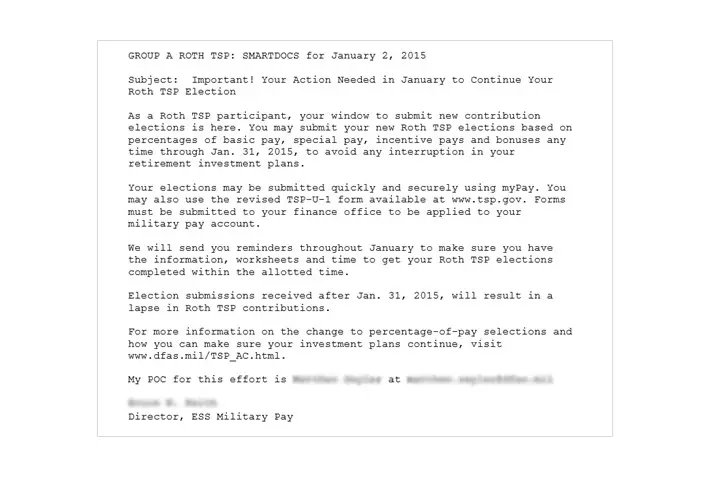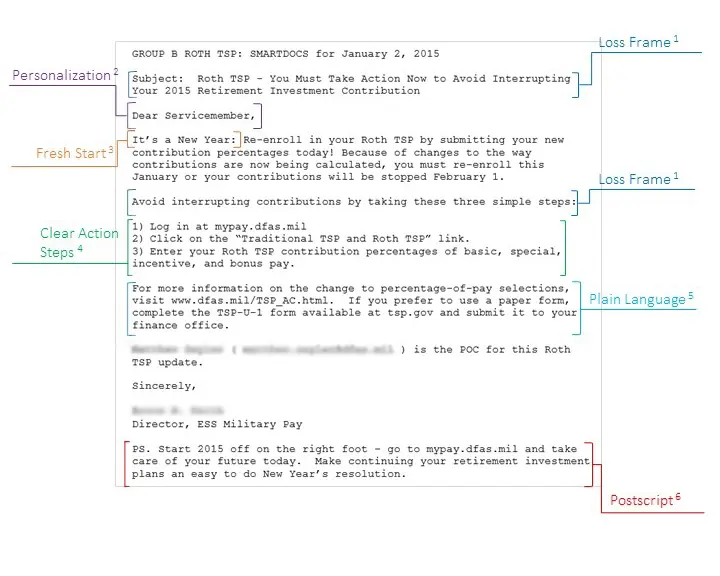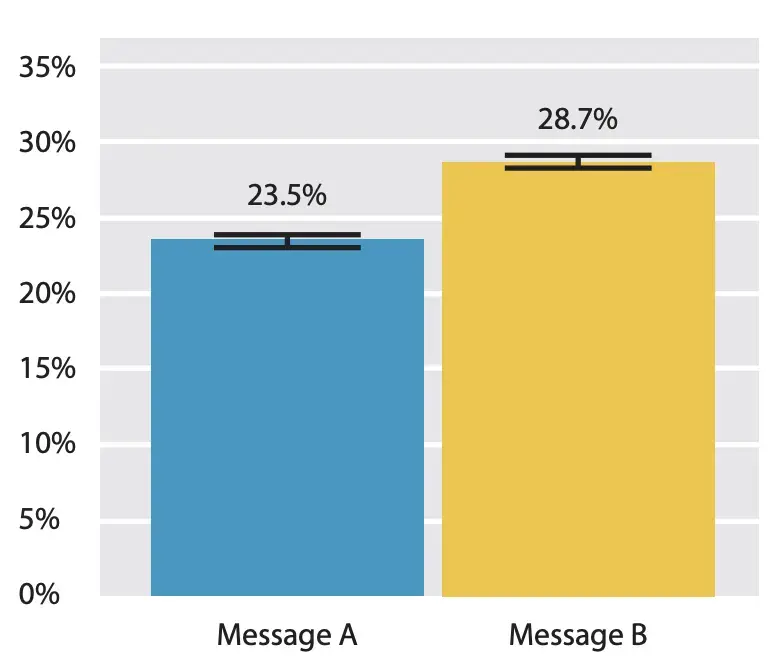Increasing Servicemember Roth TSP re-enrollment

Service member re-enrollment
What was the challenge?
The federal government operates a workplace savings program called the Thrift Savings Plan (TSP) for all of its employees. While civilian employees are automatically enrolled in TSP, Servicemembers are not. Due to a change in the military pay system, nearly 140,000 active duty Armed Forces members needed to re-enroll in their Roth TSP to avoid indefinite suspension of their contributions.
What was the program change?
We redesigned the email notification, emphasizing the New Year as a fresh start, identifying the simple steps for re-enrollment, and encouraging action to avoid losing savings.
How did the evaluation work?
The nearly 140,000 Servicemembers who needed to re-enroll were randomly assigned to two groups: half were sent the standard email, and half were sent the redesigned email. Following email distribution DFAS tracked re-enrollment requests.
 Standard email sent to participants
Standard email sent to participants
 Redesigned email sent to participants
Redesigned email sent to participants
The redesigned email shows how we incorporated specific behavioral insights into the adapted message.

What was the impact?
One week after emails were sent, 22% more Servicemembers re-enrolled in TSP, or at least accelerated their re-enrollment, as a result of the redesigned email. As a result of this success, a modified version of the more effective email was scaled to the entire population, encouraging remaining Servicemembers to act before the deadline.
Citations:
- Loss aversion: Kahneman, Daniel and Amos Tversky. “Prospect Theory: An Analysis of Decision under Risk.” Econometrica, 47.2 (1979): 263-291; Ganzach, Yoav, and Nili Karsahi. “Message framing and buying behavior: A field experiment.” Journal of Business Research 32.1 (1995): 11-17.
- Personalization: Dijkstra, Arie. 2005. “Working Mechanisms of Computer-Tailored Health Education: Evidence from Smoking Cessation.” Health Education Research 20:527-539.
- Fresh start: Dai, Hengchen, Katherine L. Milkman, and Jason Riis. “The fresh start effect: Temporal landmarks motivate aspirational behavior.” Management Science 60.10 (2014): 2563-2582.
- Action steps: Allen, Heidi, Bill J. Wright, and Katherine Baicker. “New Medicaid enrollees in Oregon report health care successes and challenges.” Health Affairs 33.2 (2014): 292-299.
- Plain language: Bower, Amanda B., and Valerie A. Taylor. “Increasing Intention to Comply with Pharmaceutical Product Instructions: An Exploratory Study Investigating the Rolesof Frame and Plain Language.” Journal of health communication 8.2 (2003): 145-156.
- Postscript (PS): Vögele, Siegfried. Handbook of direct mail: the dialogue method of direct written sales communication. Prentice Hall, 1992.
